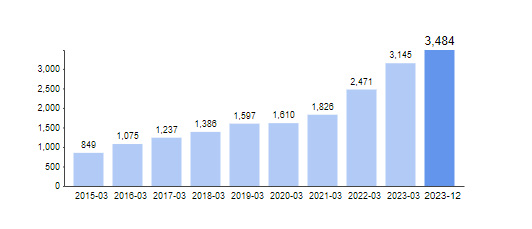Top 10 Tips To Automate Stock Trading And Monitoring, From Penny Stocks To copyright
Automation and regular monitoring of AI trades in stock are essential for optimizing AI trading, particularly when dealing with volatile markets like the penny stock market and copyright. Here are ten ideas for automating trades, while making sure that efficiency is maintained with regular monitoring.
1. Clear Trading Goals
Tip: Define your trading objectives like the risk tolerance, return expectations, and asset preferences (penny stocks, copyright, or both).
What’s the reason? The selection of AI algorithms and risk management guidelines as well as trading strategies is governed by clear and precise goals.
2. Trading AI Platforms that are Reliable
TIP: Use AI-powered trading platforms which allow for complete automation as well as the integration of your brokerage company or copyright exchange. Examples include:
For Penny Stocks: MetaTrader, QuantConnect, Alpaca.
For copyright: 3Commas, Cryptohopper, TradeSanta.
What is the key to automation’s success is a solid platform with strong execution capabilities.
3. Customizable trading algorithms are the main goal
Tips: Select platforms that allow you to design and create trading algorithms customized to your particular strategy.
Why? Because a custom-designed algorithm will ensure the strategy aligns to your specific trading style.
4. Automate Risk Management
Tips: Set-up automatized risk management tools, such as stop-loss order, trailing stops, and levels of take-profit.
Why: These safeguards can protect your portfolio, especially in volatile markets such as penny stocks and copyright.
5. Backtest Strategies Before Automation
Prior to going live, test your automated strategy on historical data to gauge the effectiveness.
Why? Because by backtesting it, you can make sure the strategy has the potential to work well in real-time markets.
6. Regularly Monitor Performance and Adjust Settings
Tip: Even if trading is automated, you should monitor performance to detect any performance issues or problems.
What to Monitor What to Track: Slippage, profit loss and whether the algorithm is aligned to market conditions.
Why: Monitoring the market constantly permits timely adjustments as conditions change.
7. The ability to adapt Algorithms Implement them
Tips: Select AI tools that adapt to changing market conditions by adjusting trading parameters using real-time data.
Why is this: Markets are constantly evolving and adaptive algorithms enable you to modify your strategies, whether it’s for penny stocks or copyright, to new trends and volatility.
8. Avoid Over-Optimization (Overfitting)
Tips: Be wary of over-optimizing your system with past data, which might lead to over-fitting (the system works best in backtests but fails under actual situations).
Why: Overfitting reduces the ability of a strategy to be generalized into market conditions in the future.
9. AI can detect market irregularities
Make use of AI to monitor abnormal patterns in the market and also to identify irregularities in the data.
Why? Because by recognizing these signals early, you are able to adjust your automated strategies ahead of a major market shift.
10. Integrate AI with Regular Alerts and Notifications
Tip: Set up real time alerts for market trading events that are important and/or significant, as well as any changes in the algorithm’s performance.
Why: Alerts inform you of crucial market changes and permit swift manual intervention should it be needed (especially in volatile markets like copyright).
Make use of cloud-based services for scalability
Tip: Use cloud-based platforms to boost speed and scalability. It is also possible to employ multiple strategies at the same time.
Cloud-based solutions allow trading systems to operate 24/7 with no interruption. This is especially important when it comes to copyright markets that don’t shut down.
You can profit from AI-powered trading strategies by automating your methods and observing them on a regular basis. This will minimize risks and improve overall performance. View the most popular good on best ai penny stocks for blog info including ai stock picker, ai stock price prediction, ai for investing, ai investing platform, using ai to trade stocks, best ai stocks, trade ai, copyright ai trading, ai stocks, stocks ai and more.

Top 10 Tips For Regularly Update And Optimize Models To Ai Stocks, Stock Pickers And Investments
It is vital to regularly improve and update your AI models for stock predictions, predictions, and investment to ensure accuracy, while also adapting to market conditions, as well as improving overall performance. Your AI models must change with changes in the market. These top 10 tips can help you keep up-to-date and optimise your AI model in a way that is efficient.
1. Continuously Integrate Market Data
Tips. Always include market data, such as the most recent stock prices and earnings report. Also, take into consideration macroeconomic indicators.
AI models are susceptible to becoming obsolete with out fresh data. Regular updates ensure that your model stay aligned with current market trends, thereby increasing prediction accuracy and sensitivity to new trends.
2. Check the performance of your model in real-time
Real-time tracking allows you to assess how your AI model performs under live market conditions.
What is the reason: Monitoring performance can help you identify issues like model drift (when the model’s accuracy degrades over time) This gives you the chance to correct and intervene prior to major losses occurring.
3. Regularly Retrain Models with New Data
Tips: Retrain your AI models in a regular manner (e.g. quarterly, monthly or monthly) by using the most recent historical data to improve the model and adjust it to changing market dynamics.
Why? Market conditions change constantly, and models based on old data may become inaccurate. Retraining helps market models learn about recent developments and patterns in the market, which ensures that it’s still relevant.
4. Adjusting hyperparameters can help improve accuracy
TIP: Optimize the hyperparameters (e.g. the learning rate, layer of numbers, etc.). Random search, grid search or other techniques of optimization can be used to optimize the performance of your AI models.
Why: The right adjustment of the hyperparameters you use is crucial in ensuring that your AI models perform in the best way possible. This improves the accuracy of predictions, as well as help to prevent overfitting (or underfitting) to data from the past.
5. Experiment with new Features and Variables
Tip. Try out new options and sources of data (e.g., social media posts or alternative data) in order increase the accuracy of model predictions.
Why: Adding new, relevant features helps improve the accuracy of models by providing it with access to more detailed information and data that ultimately help improve stock-picking decisions.
6. Use Ensemble Methods for Improved Predictions
Tip: Use techniques for ensemble learning, such as bagging or stacking to mix AI models. This improves the accuracy of your prediction.
The reason: Ensemble methods increase the accuracy and reliability of AI models. They accomplish this by leveraging strengths from multiple models.
7. Implement Continuous Feedback Loops
Tip: Use feedback loops to continually fine-tune your model by analyzing the market’s actual results as well as models predictions.
Why: The feedback loop allows the model to gain insight from the actual performance. It can identify weaknesses and biases in the model that need to be fixed, as well as refine the future forecasts.
8. Testing for stress and Scenario Analysis The test is conducted regularly
Tips. Stress-test AI model on a regular basis using fictional market conditions. For example, crash, extreme volatility and unexpected economic situations.
Stress tests confirm that AI models can adapt to unusual market conditions. Stress testing can help identify weak points within the AI model that can make it perform badly under extremely or volatile market conditions.
9. AI and Machine Learning: What’s New?
Keep up-to-date with the latest AI techniques, tools, and algorithms. You can incorporate these in your model.
Why is that? AI is a constantly evolving field. Making use of the latest advances can lead to better models’ performance, efficiency as well as accuracy in stocks predictions and stock picks.
10. Always evaluate and adjust to ensure Risk Management
Tips. Continuously review and refine aspects of risk management within your AI (e.g. Stop-loss Strategies or Position Sizing, Risk-Adjusted Returns).
Why risk management is vital for stock trade. Your AI model is evaluated regularly to ensure that it is optimized, not just for returns but also for managing the risk of changing market conditions.
Monitor the market and incorporate it into your model updates
Tip: Integrate the sentiment analysis (from news media, social media and more.) into your model updates. You can update your model to take account changes in investor sentiment and psychological factors.
The reason: Market sentiment can have a major influence on stock prices. Incorporating sentiment analysis into your model will enable it to react to more emotional or mood fluctuations that may not be captured using traditional data.
Look over the following article for more details.
By constantly updating and improving your AI stock picker, forecasts and investment strategies you can ensure that your model is constantly evolving, accurate and competitive in a constantly changing market. AI models that are continually refined and retrained with the latest information and also incorporate real-world feedback, along with the latest AI advances, will provide you with an advantage in forecasting stock prices and investment decision making. Read the top rated get more information for ai stock price prediction for site examples including ai copyright trading bot, best ai stocks, ai for trading, incite, best ai penny stocks, best ai trading app, copyright ai trading, copyright predictions, ai copyright trading bot, best ai for stock trading and more.

Leave a Reply